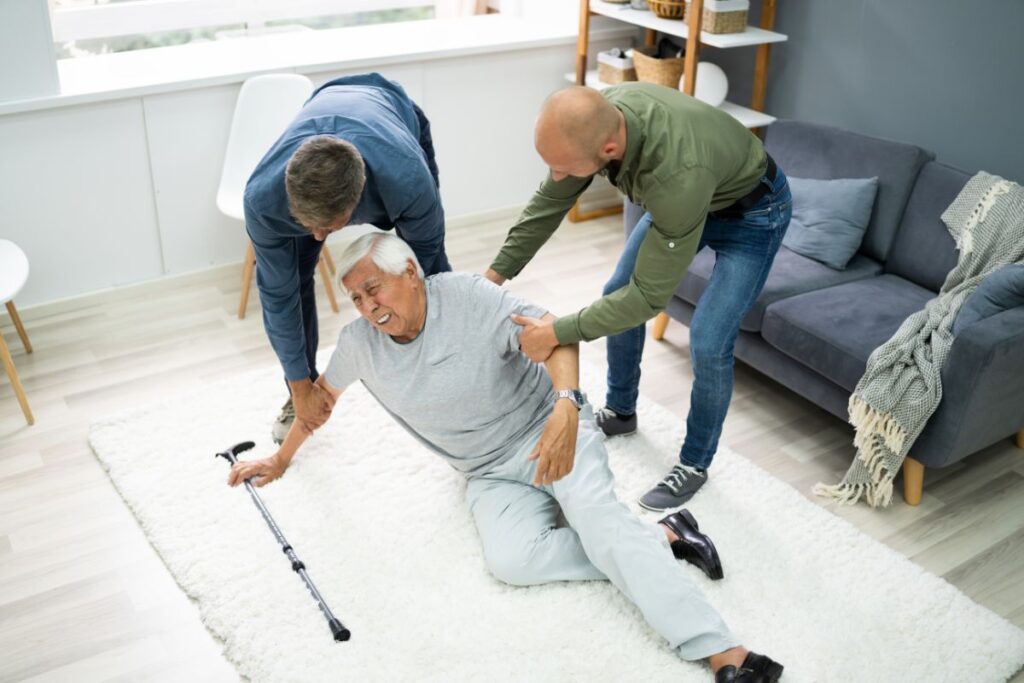Falls are a significant concern for seniors, as they can lead to serious injuries and a decrease in quality of life. However, with the right strategies and precautions, falls can often be prevented. This blog will explore various ways to enhance safety and reduce the risk of falls for older adults.
Understanding the Risks
Before implementing prevention strategies, it’s essential to understand the factors that contribute to falls among seniors.
These may include:
- Balance and gait issues: Changes in balance and the way one walks can increase fall risk.
- Medications: Some medications have side effects such as dizziness or drowsiness.
- Vision problems: Poor vision can make it difficult to navigate spaces safely. Especially for individuals with dementia. Their vision will decline as they transition through the stages of dementia.
- Home hazards: Cluttered spaces, loose rugs, or inadequate lighting can all contribute to falls.
Effective Fall Prevention Strategies
Improve Home Safety
Making a home safer is crucial for fall prevention:
- Remove tripping hazards: Keep floors clear of clutter, secure loose rugs, and ensure all pathways are unobstructed.
- Install grab bars: Place grab bars in the bathroom near the toilet and shower.
- Enhance lighting: Ensure that all areas, especially staircases, are well-lit. Consider using night lights.
Exercise Regularly
Physical activity strengthens muscles and improves balance:
- Balance exercises: Activities like tai chi or yoga can enhance stability.
- Strength training: Building muscle strength can support better balance.
- Walking: Regular walking can help maintain overall fitness and mobility.
Review Medications
Ensure medications are not contributing to fall risks:
- Consult with a healthcare provider: Regularly review medications with a doctor or pharmacist to understand side effects.
- Be mindful of interactions: Some medications may interact with others, increasing fall risk.
Schedule Vision and Hearing Tests
Regular check-ups can help detect issues that may lead to falls:
- Vision tests: Ensure glasses prescriptions are up-to-date.
- Hearing tests: Good hearing can help maintain balance and spatial awareness.
Community Resources
There are numerous community resources available to assist seniors in fall prevention:
- Local senior centers: Often offer exercise classes tailored for seniors.
- Health clinics: May provide fall risk assessments.
- Non-profit organizations: Some offer home safety evaluations and modifications.
Conclusion
Preventing falls is a critical component of maintaining health and independence for seniors. By understanding the risks and implementing effective strategies, seniors and their caregivers can significantly reduce the likelihood of falls. Prioritizing safety in the home, staying active, managing medications, and ensuring regular health check-ups are all vital steps in this process.

